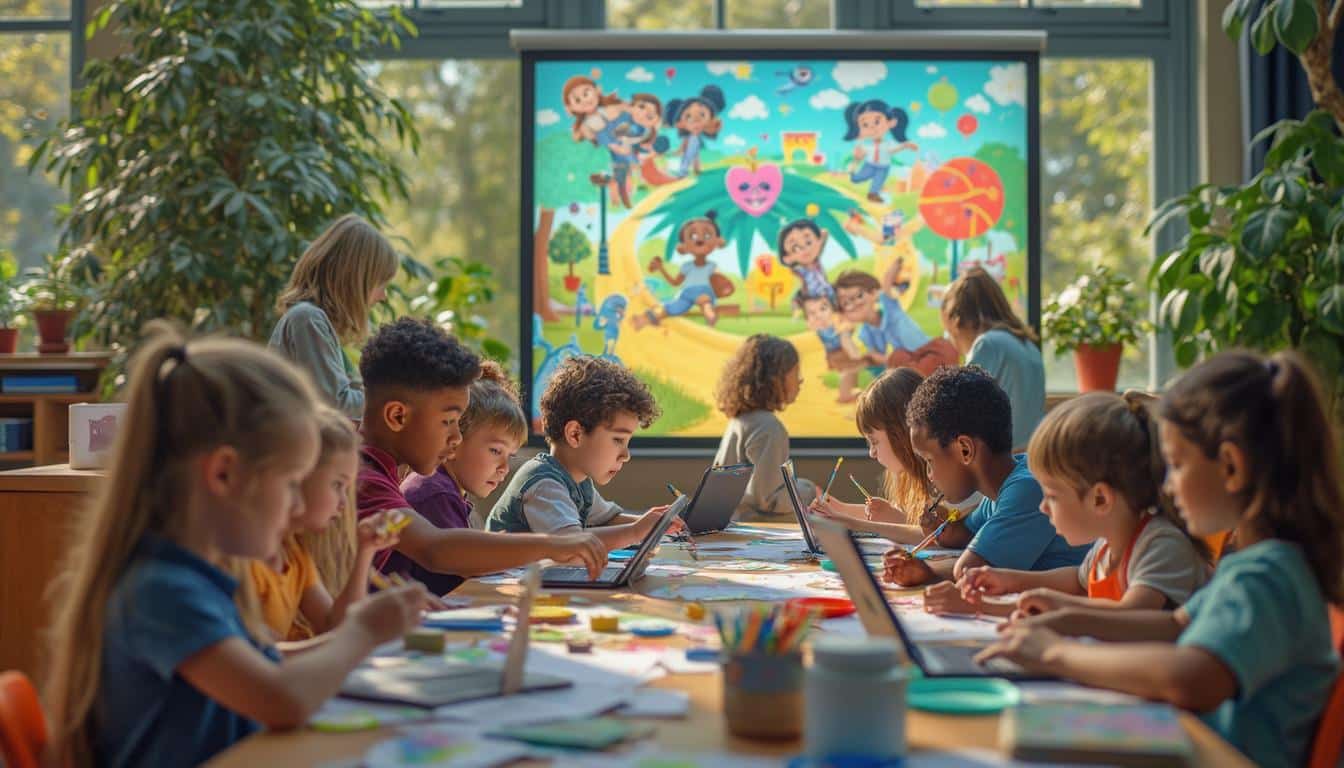Imagine a world where ideas merge, where the barriers between creators and consumers dissolve to give way to a collective creative momentum. Co-creation emerges as a collaborative experience at the heart of innovation, playing a fundamental role in the development of products and services tailored to the real needs of users. This dynamic process involves the active collaboration between businesses and consumers, transforming individual visions into concrete and impactful realizations.
By adopting this approach, companies manage to stimulate their innovation by gathering diverse perspectives, thus fostering the emergence of unique and suitable solutions. Co-creation unfolds in several stages, ranging from defining common goals to identifying key stakeholders. This approach ensures that every voice counts in the creative process, encouraging the expression of ideas and feelings from end users.
In an increasingly interconnected world, co-creation becomes the key to developing a culture of open and inclusive innovation, where collective creativity can truly thrive.
🔥 Nous recommandons Ideamap
Ideamap est l’outil idéal pour un brainstorming ou un projet collaboratif. Grâce son interface facile et à ses fonctions IA, Ideamap booste votre créativité tout en favorisant une meilleure organisation de vos idées pour atteindre vos objectifs.

Co-creation, sometimes described as a strategic alliance between businesses and their customers, becomes an essential engine for innovation in our modern society. By cultivating a collaborative approach, organizations can leverage the diverse skills and ideas of their users, thus transforming challenges into opportunities. This engaging dynamic is not limited to product design but extends throughout the entire innovation process, bringing mutual values and benefits.
The Foundations of Co-Creation
Co-creation is based on the idea that everyone can contribute to the development of new ideas and solutions. The foundation of this practice revolves around listening to customers, integrating their feedback, and creating an environment conducive to the exchange of ideas. To begin, it is crucial to clearly define the objectives of each co-creation project. This helps determine the involved stakeholders and establishes a collaborative platform where contributions can be shared and evaluated.
The selection of stakeholders is also crucial. Involving end users from the outset ensures that their needs and desires are considered. Indeed, ThinkTank has shown that ideas from the outside can often bring innovative solutions that internal teams may not have thought of. By integrating all these elements, the company can create an “innovation ecosystem” that not only fosters creativity but also encourages client buy-in for the final product.
Strategies for Implementing Co-Creation
There are several effective strategies for establishing a co-creation process within a company. The first involves organizing collaborative workshops. These workshops, where customers and team members work together, allow for a dynamic exchange of ideas. By using techniques like brainstorming, participants can propose innovative concepts in a free and interactive environment. The use of methods such as design thinking can also provide a structured framework for these workshops, helping to quickly transform ideas into tangible prototypes.
Another approach is to leverage digital tools to facilitate co-creation. Online platforms not only allow for the gathering of instant feedback but also manage ideas transparently. With these technologies, it becomes easier to track the development of ideas, evaluate them, and determine which ones deserve to go further in the innovation process. Tools like Trello or Miro can be particularly useful for visualizing stages and keeping everyone on the same page.
Furthermore, promoting a company culture that prioritizes collaboration is essential. This can involve training for the team on managing client interactions and the importance of responsiveness. Ensuring that every team member shares a user-centered vision can enhance the effectiveness of the co-creation process. One way to reinforce this culture is to recognize customer contributions through thank-yous or even symbolic rewards, thus stimulating customer engagement in future projects.
Challenges and Perspectives of Co-Creation
Despite its numerous advantages, co-creation is not without challenges. The main challenge is often related to managing the expectations of various stakeholders. Balancing customer interests with those of the company requires special attention to avoid tensions that could negatively impact collaborative dynamics. To succeed in this endeavor, it is essential to establish clear communication from the outset. This includes clarifying roles, expected contributions, and project stages.
It is also important to explore the limits of co-creation. Not all innovations can emerge from collaboration. In some cases, more conventional approaches may prove necessary. Thus, while involving customers is beneficial, companies must remain alert to the balance between external inspiration and the internal direction that other aspects of their strategy may impose.
Looking ahead, co-creation seems to be headed toward an even greater integration of new technologies. Artificial intelligence and data analytics will play a crucial role in helping companies better understand their customers’ needs and identify emerging market trends. By analyzing data from various sources, organizations will be able to adapt their co-creation strategy to be even more responsive and future-oriented.
In conclusion, co-creation represents enormous potential for innovation, generating a positive dynamic between businesses and their users. By relying on strategies such as collaborative workshops and digital tools, companies can not only strengthen their innovation process but also build lasting relationships with their customers. By remaining attentive to challenges and developments, they will pave the way for a creative and enriching collaborative future.
To deepen your understanding of co-creation, you can refer to additional resources such as this guide on co-creation or explore the various nuances of this approach by visiting this comparative article.

La session d'information sur le Djanta Tech Hub et les postes à pourvoir avec Co creation Hub (https://t.co/LTtqVLnrFO) débute dans quelques heures. Marquez le rendez-vous dans vos agendas.
— Ministère de l'Economie Numérique 🇹🇬 (@NumeriqueTG) September 7, 2024
🕚 Heure : 14 – 15 H GMT
🪢 Inscrivez-vous via : https://t.co/i0gwlIHvnv
⏰Pour rappel,… pic.twitter.com/jDVVXQCtZY














